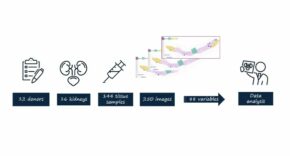
Only 7.1% of patients had a majority of their attacks associated with increased levels of perceived stress and 76% of the total number of migraine attacks were associated with either flat or decreasing levels of perceived stress.
The study is the largest stress-migraine study to date, following 351 patients over three months and analysed 2115 migraine episodes.
Done in collaboration with the University of Calgary, the study is unique in that it examines individual patterns rather than aggregate ones.
Curelator today announced new data that challenges the age-old belief that stress is a significant factor in triggering migraine attacks. The results are published in the January issue of the leading Headache, The Journal of Head and Face Pain medicine journal, and they underscore the need for personalized phenotypic analysis and treatment plans in migraine.
The study concludes that only 7.1% of patients had a majority of their attacks associated with increased levels of perceived stress. Most individuals, 61.5%, had more than 50% of their attacks preceded by flat stress levels. Only 3.4% of people had half of their attacks following decreasing levels of stress. The remaining portion of individuals, 28%, had a variable mixture of increasing, flat and/or decreasing levels of stress preceding their attacks.
In addition, in all individuals, only 24% of migraine attacks were preceded by increased levels of perceived stress. In contrast, patients had either flat or even decreasing levels of perceived stress preceding 76% of migraine attacks.
“These findings strongly suggest that, for the vast majority of patients, the role of perceived stress in triggering migraine attacks is less important than previously hypothesized,” commented Serena Orr, M.D., senior author of the study, headache specialist, paediatric neurologist, and researcher at the Cumming School of Medicine, University of Calgary, Canada. “This contradicts the previous belief that increases in stress consistently trigger migraine attacks, because we found that this relationship is rather uncommon”.
The international study, conducted by Curelator and in collaboration with the University of Calgary, is the largest to date to examine the relationship between perceived stress and migraine: both in number of participants (n= 351 patients) as well as study duration (three months). During the course of the study, participants had a total of 2,115 migraine attacks, each of which were analysed with respect to individual persons’ daily stress levels before, during and after the attack.
In comparison to traditional clinical studies, this one specifically examined individual patterns, not just aggregate patterns, in relation to how perceived stress changes in relation to the onset of pain of migraine attacks. Results showed a surprisingly high amount of variability between individuals and even within the same person.
“Clearly, average population results can only be applied to a minority of individuals; providing compelling rationale for generating individual phenotypic profiles before administration of individual treatment plans,” explained Marina Vives-Mestres, Ph.D., lead author, Analytics Lead at Curelator and Visiting Professor of Statistics at the Universitat de Girona (Spain).
“The N of 1 methodology used in this study applies the approach of personalized medicine to help individuals understand their headache patterns”, said Richard Lipton, MD, Edwin S. Lowe Professor and Vice Chair of Neurology and Director Montefiore Headache Centre at Albert Einstein College of Medicine. “There is tremendous variation from person to person in their trigger factors. The typical approach of assessing population averages generates results that are difficult for individuals to apply. If red wine triggers your headaches but not mine, there is no need for me to avoid it.”













